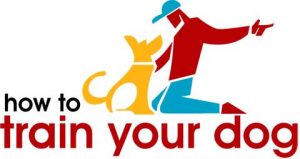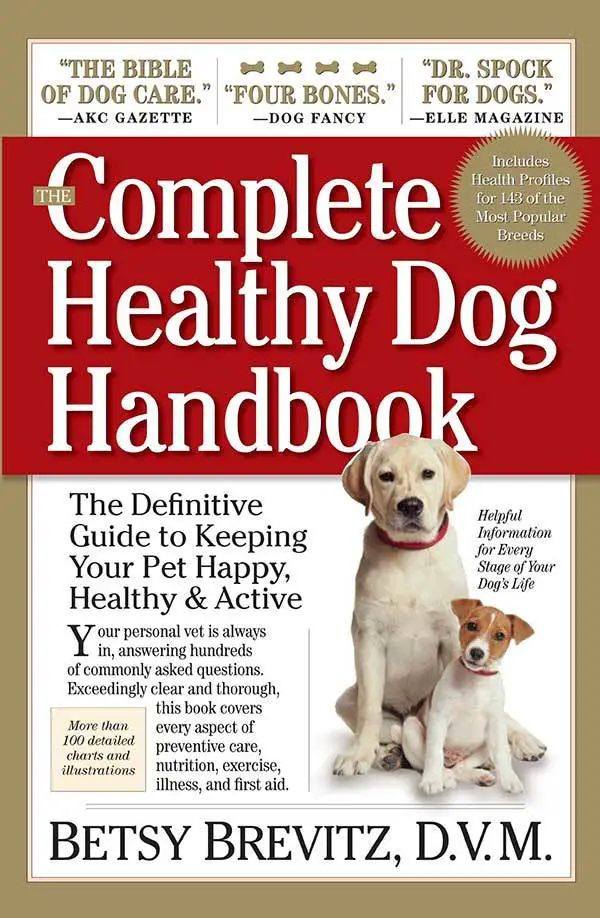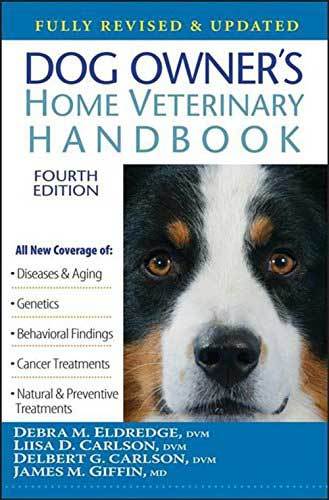Autism is defined as a long-term developmental disability that negatively affects the victim’s perception of the world around them.
Being a lifelong disability, the condition significantly interferes with the victim’s physical, social, mental, and emotional development. An autistic person will see, feel, or hear their environment very differently from how other people perceive it.
From time immemorial, autism has always been associated with humans. It was not until in 1966 that research first pointed out to the possibility of our canine friends also suffering this disability. Since then, some dog owners have always been wondering, can dogs get autism?
Unfortunately, the answer to that question is a resounding “Yes.” Dogs can indeed suffer autism and for the most part, the symptoms of this disability manifest nearly the same way as they do in humans.
If you’ve lately observed significant changes in how your canine responds to its environment, the chances are that it could be autistic.
Read on for more insights on canine autism and what you can do to cope up with an autistic dog.
Table of Contents
Quick Facts about Autism in Dogs
You might still be wondering to yourself, can dogs suffer from autism?
Well, as we’ve already pointed out, the first evidence on the possibility of the occurrence of autism in dogs came up in 1966. Researchers discovered that certain dogs presented symptoms similar to those that autistic humans show.
But even in the wake of these revelations, veterinary officers did not immediately accept that dogs could be autistic. Remember that autism is quite rare in humans, and even more uncommon in dogs. Therefore, it was mostly passed for a condition known as canine dysfunctional behavior.

However, in 2015, the American College of Veterinary Behaviorists revisited earlier studies and for the first time, veterinarians were able to concur that dogs also suffer autism.
The Bull Terriers were the first dogs to be cited for autistic behavior. From then, experts have continually raised awareness on the reality of canine autism, and research on the disability is also ongoing.
What Causes Autism in Dogs?
To try and settle the question, can dogs be on the autistic spectrum, we should first examine the possible causes of this disability.
Generally, there’s no definite cause for autism, be it in humans or canines. However, researchers have been able to put forward various suggestions that could offer clues on the possible triggers of canine autism.

The first theory suggests that this disability results from the underdevelopment or over-development in some brain sensory circuits.
Neurological scientists who advanced this theory argue that the disorder emanates from specialized brain cells known as mirror neurons.
A mirror neuron refers to a special neuron that fires when an animal acts as well as when the animal observes as the same action is performed by another animal. Therefore, these neurons play a significant role in recognizing actions and emotions, then responding to them appropriately.
Mirror neurons are instrumental in bonding processes and significantly contribute to the development of social skills. The absence of these neurons would then mean that the dog either doesn’t recognize the action, or it simply doesn’t know how to respond to it. The explanation is apt and logical, only that scientists are yet to establish what causes the absence or malfunction of the mirror neurons.
Secondly, autism is believed to be congenital. That means dogs are born with the condition, and cannot develop it in the course of their lives. And being a congenital condition, it therefore goes that a dog can inherit it from its parents or other relatives.
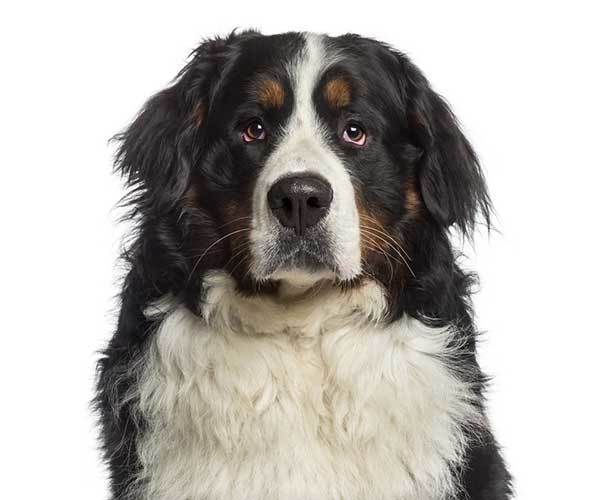
Researchers have also cited the exposure to certain toxins as a possible trigger for autism in dogs. That especially applies where it’s the parents that were exposed to these toxic chemicals.
For instance, inappropriate vaccinations might significantly increase the chances of a dog giving birth to an autistic pup. This assumption seems to corroborate the commonly-held beliefs that over-vaccination of dogs can be quite dangerous.
Remember that in humans, vaccines like the Mumps Measles and Rubella (MMR) have been adversely mentioned. Processed foods and foods that contain aerosol residues have also been cited as possible triggers of autism in humans.
While dogs don’t get MMR, they receive cluster vaccines. Cluster vaccines refer to vaccines that are administered at the same time to protect a dog from a variety of infections. Examples of these vaccines include Parvovirus, Hepatitis, Parvo, and Distemper. The fact that these vaccinations are undertaken at the same time is an even greater concern.
Lastly, autism is thought to be idiopathic, which means its cause remains unknown. Of course, that’s a pronouncement no researcher would want to hear. To advance research on the disability, its cause must be cited, as only then can the proper remedy be applied.
The good news, though, is that autism is similar in both humans and dogs. As such, it may only be a matter of time before researchers uncover even more triggers of canine autism.
Traits of Dogs with Autism
There are numerous signs that a dog is autistic and as we’ve already mentioned, many of these signs also manifest in autistic humans.
The following are telltale symptoms of an autistic dog.
1. Social Malfunction Symptoms
An autistic dog will naturally be unwilling or unable to play, eat, or go for a walk. Such dogs no longer interact with their owners as they did before, and will avoid the slightest attempt at eye contact.
When the dogs are put in new situations, they’ll exhibit flawed interactions, both with their owners as well as other dogs.
A dog that used to be playful and jovial suddenly becomes socially nervous, aloof, and withdrawn. They will no longer greet you when you come back home; neither will they escort you to the gate as you leave for work as they did before.

If you just adopted the dog, you can expect it to demonstrate some shyness and reservations as it gets used to the new environment.
However, these feelings should wear off after a couple of weeks. So, if you realize that your dog exhibits any of the above social malfunction symptoms months after adoption, the chances are that the canine is autistic. Pay particular attention if the dog is a Labrabull breed.
ALSO READ: How to Stop Your Dog from Peeing in the House (6 Tips)
2. Behavioral Symptoms
Most of the autistic symptoms in dogs show at the behavioral level. Besides outright avoidance of people, dogs, and other objects, an autistic dog will also stare blankly at stuff for prolonged durations of time.
Autistic canines also tend to exhibit repetitive behavior. You may observe pacing, tail-chasing, or shadow-chasing, followed by evident nervousness when you try to break these routines.
Ensure you differentiate between healthy doggy routine behaviors and unusual repetitive actions. For instance, if your dog escorts you each morning as you go to work, that’s perfectly in order.
You should be more concerned when the dog has a set of ritual practices it follows every day or repetitively after a couple of hours. For instance, does the dog get mad or sad each time you put food on the table? Does it only prefer foods with specific textures? These are classic symptoms of Obsessive-Compulsive Behavior in dogs, which is the surest sign of an autistic pooch.
Also, look out for avoidance behavior. Generally, autistic dogs tend to restrict themselves to a small area or a small number of activities.
And as strange as it sounds, autistic canines may also take to some uncanny organizational behaviors. An example includes arranging their toys in order of their shape, size, or color.
3. Mental Symptoms
Autistic dogs are quite nervous and are easily scared. But since they can’t make out what scares them, these dogs tend to avoid everything and everyone.
Even when there’s no genuine cause for fear, the dogs will overreact to every stimulus. A simple drop of the tennis ball is enough to throw them off balance.
An autistic dog is perpetually in a trance-like state. You might be forgiven for thinking the dog suffered a traumatic experience in the past.
4. Sensorial Symptoms
Canine autism makes a dog feel everything differently. In most cases, the dog will not perceive physical stimuli. But even when it does, the canine will respond in a rather bizarre manner, usually exhibiting a reaction that’s the direct opposite of what you expected.
For instance, you may whistle and call the dog, thinking it will wag its tail in excitement. But much to your surprise, you might see the dog hiding its tail between its legs in a clear show of fear.
ALSO READ: 6 Simple Steps to Build Confidence in A Dog
5. Physical Symptoms
Due to behavioral abnormalities, an autistic dog can exhibit a wide spectrum of physical symptoms, such as staying still and appearing indolent. Such dogs are known to walk in slow motion.
Generally, autistic dogs tend to show a generalized state of fatigue, lethargy, and disinterest in all activities, especially those that most dogs find to be fun.
Weakness of the will and lack of enthusiasm are other common physical signs of this disability. You might place food in front of a visibly hungry dog. But then you realize your pooch can’t drag itself to it, despite the food being only inches away.

6. Emotional Symptoms
An autistic dog finds it difficult to exhibit emotions, or like we’ve highlighted above, displays all the wrong feelings. Dogs experience numerous emotions, and you can’t possibly read all of them.
However, dogs suffering from autism are almost impossible to predict. That’s because they always wear a face of indifference. Therefore, you’ll never know when they’re sad, happy, scared, etc.
How to Help a Dog with Autism
So far, we’ve already settled the question – “can dogs have autism”? We’ve also discussed the possible causes and symptoms of the disorder. You’re probably now wondering if there’s a cure for canine autism.
As autism isn’t a disease or an illness, there’s presently no cure for it. However, there’s a raft of remedies you can apply to alleviate the symptoms and enable the dog to cope up with the condition.
The following are some of these methods.
1. Early Socialization
We cannot emphasize the importance of early socialization. According to experts, puppies should be socialized within the first 16 weeks of their existence.
This is especially true for pups who are born to autistic parents. Positive stimulation and early learning can go a long way in averting the disorder.
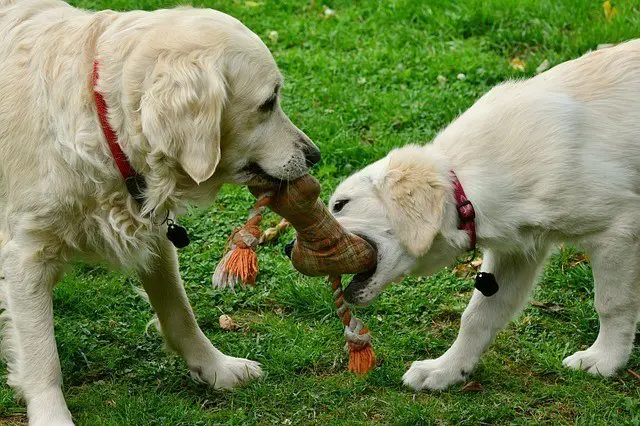
2. Avoid Stressful Situations
Another strategy you can apply to manage autism in dogs is by avoiding potentially-stressful situations.
While autistic dogs tend to fear anyone and anything, their fears are often more profound when dealing with strange people or places.
Therefore, shun situations that would invariably bring your dog to interact with strangers. Unfortunately, that means cutting back on dog walks and outdoor adventures. Thankfully, you can still manage to satisfy your dog’s exercise needs at home. How about you get your pooch a dog-friendly treadmill?
Another tip to avoid stressful scenarios is to establish a routine and stick to it. Remember that autistic or not, dogs are creatures of habit. Therefore, anything that disturbs their routine is sure enough to make them nervous.
Ideally, the routine you establish should be one that takes care of the dog’s needs. For instance, have fixed feeding, petting, and exercise hours. And when introducing a new person or pet to an autistic dog, do the introductions gradually and gently.

By all means, ensure the autistic canine doesn’t feel threatened by the new member of the family. If it’s a new toy, leave it in their patch and allow the dog ample time to scope it out first.
Experts also encourage going slow on home renovations and refurbishments. Much as you want a new furniture set, ensure you bring it in slowly, giving the dog time to get used to the makeover.
If anxiety symptoms persist despite applying all the above recommendations, you may consider anti-anxiety wraps. These are wraps that fit snugly around your dog, such as ThunderShirt.
Besides anxiety wraps, a crate cover or a secure kennel may also go a long way in helping your pooch feel secure and relaxed.
 3. Insist on Plenty of Exercise
3. Insist on Plenty of Exercise
An autistic dog deserves the right channels to get rid of its phobias and anxieties. And plenty of exercise is an ideal way to make that happen.
But as we’ve just pointed out, you should avoid any exercise that means the dog has to meet new people or venture into new places. Besides, avoid introducing new exercise routines every time. You may consider things like weighted vests or saddlebags full of water bottles.
Generally, choose a workout routine that’s unique to the dog.
And as you may already know, a great exercise program must always be complemented by a proper diet. You can discuss with your vet on the right foods for autistic dogs. And once you establish the diet, stick to it for as long as you can.
4. Physical Therapy
Autistic dogs tend to be highly averse to overprotective behaviors. Therefore, don’t get all too emotional to baby your dog as that may reinforce inappropriate behaviors.
For example, don’t always come to the dog’s rescue at the slightest inkling of trouble. Much as you want to show compassion for your furry little companion, leave some situations to play out.
That also means respecting your dog’s limitations. For instance, if your pooch doesn’t like to be petted, or finds certain sounds unsettling, understand them and respect such boundaries.
The good news, however, is that some dogs tend to respond well to physical therapy. You just need to study your pooch carefully and determine if it’s given to cuddling, petting, and massage.

5. Medications
There are numerous medications that are used in treating autism in humans. Some of these can be extrapolated and used to treat the condition in dogs.
When treating autism in both humans and canines, doctors generally target the most troubling symptoms. So, only a handful of medications may be prescribed depending on the symptoms displayed.
6. Schedule Vet Visits
Like is the case with any condition, autism is easier to manage if detected early enough. That underscores the importance of regular visits to the vet.
Your vet will be able to examine the dog and tell if it’s displaying any autistic tendencies, even before the symptoms become apparent.
If you suspect the dog is already autistic, schedule for veterinary home visits as you don’t want to make the dog more anxious by going out.
ALSO READ: 5 Signs Of A Jealous Dog And How to Deal With It
So, Do Dogs Get Autism?
Yes, canine autism is a reality. Sadly, there’s no silver bullet to this condition.
But the good news is that the disorder can be managed. And if detected early enough, it can as well be reversed.
